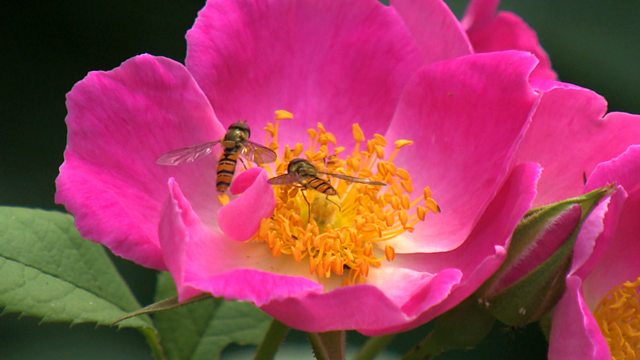
Episode 17
Gardening magazine. Monty Don shows there is still time to sow some late vegetables, even when space is at a premium. Carol Klein admires the bearded iris.
Longmeadow is in full bloom, but Monty Don is keen to remind us that there is still time to sow some late vegetables, even if you are really short of space. Meanwhile, Carol Klein has been out and about in Norfolk to revel in the delights of the bearded iris. And we visit an extraordinary garden in Essex with a 252ft long wisteria trained along a wall.
Last on
Clips
-
![]()
Planting irises
Duration: 03:03
-
![]()
Monty’s white garden
Duration: 01:08
Bearded irises

Bearded irises normally flower in May or June and get their name from the furry ‘beard’ on their lower petals. Many of them are strongly scented and they come in a wide range of colours. To do well, they need plenty of sun and good drainage, and often do best along the edge of a path where they are less likely get swamped by other plants.��
With so many varieties on sale, it’s difficult to know which ones to go for. But if David Howard had to pick just ten, he’d choose the following:
- Blue Rhythm (cornflower blue)
- Carnaby (apricot & purple)
- Foggy Dew (white with lilac margins)
- Forrest Hills (dark purple)
- Frost & Flame (white)
- Kent Pride (chestnut brown)
- Langport Storm (pale mauve & brown)
- Lemon Ice (creamy yellow)
- Rajah (yellow & brown)
- Raspberry Blush (pink)
(www.rhs.org.uk)
Wisteria garden
If you’d like to see Judith Wilson’s amazing wisteria in full flower next spring, then check out the website below nearer the time.
��
Wickham Place Farm
Station Road
Wickham Bishops
Witham
Essex
CM8 3JB
��
(www.ngs.org.uk)
Pruning a wisteria

Left to their own devices, wisteria will quickly romp up the side of a house or swamp a tree. But if you give them a good prune in July or August, this will help to keep rampant specimens under control. All you need to do is remove the long, whippy growths that are thrown out at this time of year. Take each one in turn and count six buds up from the old wood, making a cut just above this point.��
To improve their flowering performance, it also helps to shorten these summer-pruned shoots in winter. January or February is the time to do this when the plant is dormant. Simply cut back each shoot so that only two buds remain.
��
Pruning instructions are always difficult to visualise, so if you need further advice on how to prune a wisteria, have a look at the clip below.
��
(www.bbc.co.uk)
Jobs for the weekend: Cut back mint
Mint often begins to go coarse in August as it starts to flower. But if you cut back part of your plant now, you’ll get a second flush of leaves in September. Tie up those stems you’ve cut and hang them upside down somewhere warm and dry. This, in turn, will give you a supply of dried mint through the winter.
��
(apps.rhs.org.uk)
Jobs for the weekend: Keep picking sweet peas
It’s really important to keep cutting your sweet peas - they’ll only run to seed otherwise. Monty cuts his every week without fail. To prolong the display, make sure you give the soil a thorough soaking if the weather turns dry. ������
��
(apps.rhs.org.uk)
Jobs for the weekend : Tidy up strawberries
Once fruiting is over, it’s worth giving maincrop strawberries a bit of a tidy up. Remove any spare runners and chop off all the old leaves. This may sound rather drastic, but allowing light and air into the crowns will help to promote fresh new growth before the winter.
������
If your strawberries are nice and healthy and you’d like to grow a few more, then now’s the time to propagate them. Choose a plantlet closest to the parent and either peg it down into the soil or into a small pot of compost. After a few weeks, the plantlet will have developed roots of its own and can be severed from its parent.
��
(www.rhs.org.uk)
Credits
| Role | Contributor |
|---|---|
| Presenter | Monty Don |
| Presenter | Carol Klein |
| Series Editor | Liz Rumbold |
| Producer | Babs Lewis |


